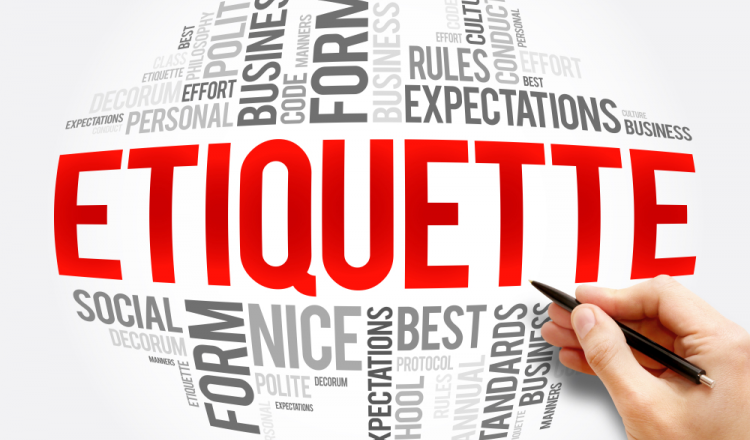Media Etiquette: Do's & Don'ts When Pitching Journalists
2022-04-26 01:17

Media Etiquette: Do's & Don'ts When Pitching Journalists-LAIKA
One of the most important parts of the PR daily routine is to contact journalists with story suggestions, product and company news, facts and figures. We call it "pitching" - similar to a startup or elevator pitch in which you only have a short moment in time to make your story rise above the crowd. Just that we do this dozens of times a week or even day!
If a client launches a product, enters a new market, closes a financing round, or would like to give a statement on a matter or has other relevant news to report, a strategy is developed by PR folks like us, on how the story can win the attention of relevant journalists. Depending on the nature of the topic, there are various options to pick from. First of all, it has to be decided for which media the news is relevant at all, which journalist is the right contact person for the topic and furthermore, how and especially when to reach out. You see there are various hurdles to overcome and the success of the strategy depends on good planning, experience and the right approach to building and fostering relationships.
So how do you pitch journalists in order to land your story? There are a few unwritten rules that (pun totally intended!) we wrote down. With a couple of Laika missions under our belt, here are our Do's and Don'ts when communicating with journalists:
Just do it? Just be relevant!
The real question to ask here is, is my news actually relevant for the contact I have in mind? Content that does not fit a journalists profile or that is in itself only producing a yawn, will not magically become relevant for journalists just by you sending out emails frantically. On the one hand it is a wasted effort, because boring or irrelevant content will not be published and on the other hand journalists remember very well who sends them pitches that are a match and who bothers them with pitches that are a pain.
Let’s take a company or founder statement for example. Those should refer to timely events - don’t send one if you are already five days late to the game. You want to offer a byline or interview? Thenreally flesh out what you have to say and why you are an expert. Ideally send a short excerpt to look at to not waste anyone's time. And do your homework - is the publication you've chosen really the right one for you? Keep the reader, audience or followers in mind. Does the medium appeal more to a younger or more experienced target group? And to which target group do I ultimately need to address my topic to?
A well-structured message always includes additional information such as images and links as well as an offer for background discussions, interviews and further inquiries.
What can I expect in return from a journalist?
On the basis of friendly demand, the journalist can be expected to make concessions on certain aspects in return for relevant news. This includes, for example, arranging a time window for the interview so that it does not take longer than agreed. In addition, it is possible to ask for rough outlines of the topic or key questions before the interview. After the interview, quotes from clients that are to be published should be released before publication. The same applies to photographic material from the interview. When making a reference, journalists should also take into account the way the company name is written, if there is no other reason not to do so. In case of a good relationship, the journalist will keep you informed about the date of publication of the article and send you a specimen copy or link upon publication.
A certain etiquette exists
Friendliness is the most important thing in communication. It is advantageous to strive for long-term cooperation, even if this may not be combined with quick success. This also includes accepting a "no" - maybe it will work next time. In accordance with this principle, no pressure should be exerted, exclusivity should not be broken, and there should be no constant phone calls in case it takes longer. Untruths and false promises are a no-go, because it is well known that lies have short legs. Basically it is always better to reach personal agreements and avoid mass mailings.
The principle of the inverted pyramid
Communication should also be comprehensible and well structured. The relevant information should be formulated simply so that it can be grasped quickly - no one likes to read a long email to realize at the end that it does not contain any interesting content. Proper preparation starts with the choice of the subject: it must be well chosen and convey a precise idea of what to expect. In the following, all information should also be listed according to the principle of the inverted pyramid: The most relevant in the first sentences and then further background information - if the message is cut off at the end, no essential parts are lost. Speaking of truncating: sending something in attachments is another no-go! Journalists do not open attachments because it is too cumbersome and may also pose a considerable IT security risk (macro viruses!). Content must be in the mail, otherwise it will be - exactly - cut off!
4 eyes spot otherwise embarrassing mistakes
Unprofessionality, such as spelling mistakes, missed deadlines and incorrect addressing of the recipient should be avoided at all costs. Therefore before sending out any media pitch, colleagues should proofread your work carefully. In addition, reliable communication also includes informing your contact person, medium and topic in advance. Direct enquiries about freely accessible information should be avoided: Do your research before asking questions that five minutes of Google search could have answered for you.
It’s a media pitch, not a sales presentation!
Especially when there is great enthusiasm for an idea, it can easily happen that the press release turns into a true hymn of praise. At this point, one should very gently get back down to earth and rather offer as precisely as possible what is really being offered - without using overly promotional wording. Journalists are not part of the target group in PR, but rather of the business partners. Readers also expect journalists to provide differentiated reporting and not advertising. This also includes that some annoying phrases and unnecessary filler words should be avoided. Decorating information with "innovative", "disruptive" and "revolutionary" sounds at first glance like a nice lurid description that increases interest, but the statement is highly inappropriate for two reasons: Firstly, hardly any news can do justice to this description and secondly, journalists do not feel taken seriously when they are presented with countless innovative and revolutionary news or products - every day!
Build to last
Communication with journalists is a business relationship. This does not mean that it cannot also be friendly and casual if mutual trust has been established. But until it comes to that, there are important etiquette rules to be followed. Providing relevant content in a concise and helpful way is the very base of all your efforts. Open and honest interaction pays off in the long run and ultimately helps your long term success the most.









